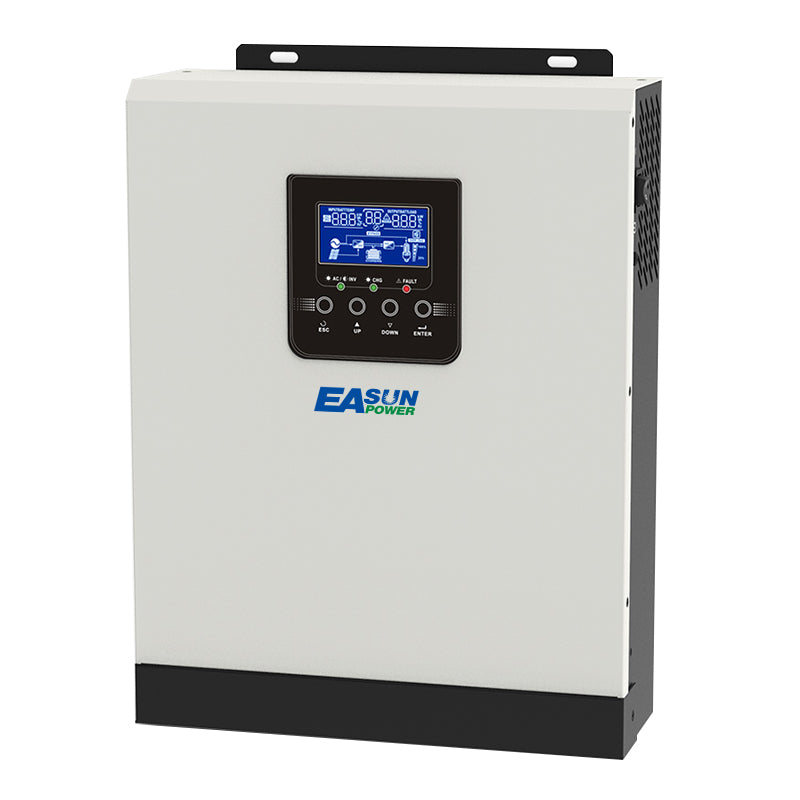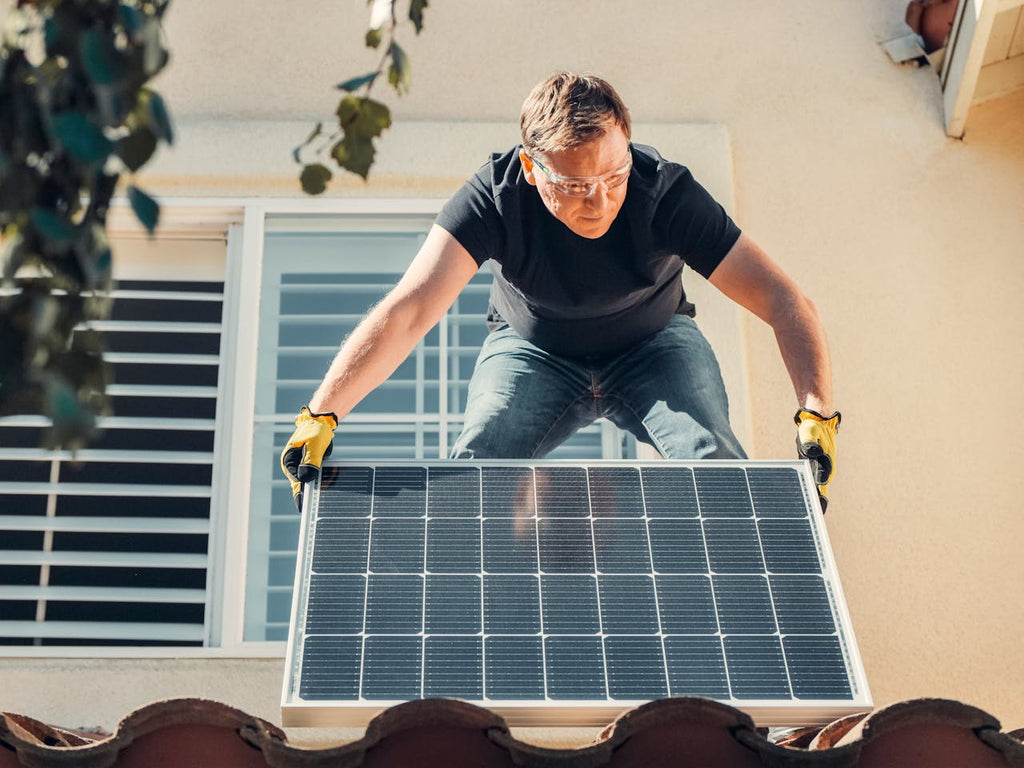
What Size Battery Do You Need to Run a 3000 Watt Inverter?
A Quick Look Sheet
| Running Time (hours) | Inverter Efficiency | Depth of Discharge (DoD) | Battery Capacity (Wh) | Battery Capacity (Ah) at 12V | Battery Capacity (Ah) at 24V | Battery Capacity (Ah) at 48V |
|---|---|---|---|---|---|---|
| 2 | 90% | 50% | 13,333 | 1,111 | 556 | 278 |
| 3 | 92% | 60% | 16,304 | 1,359 | 679 | 340 |
| 4 | 90% | 70% | 19,048 | 1,587 | 794 | 397 |
| 5 | 93% | 60% | 26,882 | 2,240 | 1,120 | 560 |
| 6 | 95% | 80% | 23,684 | 1,974 | 987 | 493 |
| 8 | 92% | 70% | 37,037 | 3,086 | 1,543 | 772 |
| 10 | 95% | 80% | 39,474 | 3,289 | 1,645 | 822 |
| 12 | 90% | 75% | 53,333 | 4,444 | 2,222 | 1,111 |
| 15 | 93% | 70% | 68,306 | 5,692 | 2,846 | 1,423 |
| 20 | 95% | 80% | 78,947 | 6,579 | 3,289 | 1,645 |
When considering the use of a 3000 watt inverter in your off-grid solar system or as a backup power source, it is crucial to determine the appropriate battery size to support your power needs. The battery capacity required depends on several factors, including the inverter's efficiency, the duration of operation, and your specific power consumption requirements. In this article, we will explore these factors and provide guidance on calculating the battery size needed to run a 3000 watt inverter effectively.
Inverter Efficiency and Power Consumption
Before delving into battery sizing, it is essential to understand the concept of inverter efficiency and its impact on power consumption. Inverters convert direct current (DC) from batteries into alternating current (AC) that powers your appliances and devices. However, this conversion process is not 100% efficient, meaning some energy is lost as heat during the conversion.
Most modern inverters have an efficiency rating between 85% and 95%. For example, if your inverter has an efficiency of 90%, it means that for every 100 watts of DC power drawn from the battery, the inverter will output 90 watts of AC power. To account for this efficiency loss, you need to factor in the inverter's efficiency when calculating the battery capacity required.

Calculate Battery Capacity for a 3000 Watt Inverter
To determine the battery size needed to run a 3000 watt inverter, you need to consider three key factors: the inverter's continuous power output, the desired running time, and the depth of discharge (DoD) of the battery.
First, let's address the inverter's continuous power output. A 3000 watt inverter can provide a maximum continuous power output of 3000 watts. However, it is important to note that this is the peak power rating, and the actual power consumption of your appliances and devices may be lower.
Next, consider the desired running time for your inverter. How long do you need to run your appliances and devices using the inverter? This duration will directly impact the battery capacity required.
Lastly, the depth of discharge (DoD) of the battery is a crucial factor in determining the battery size. DoD refers to the percentage of the battery's capacity that can be safely discharged without damaging the battery. Most deep-cycle batteries used in off-grid systems have a DoD of 50% to 80%. To ensure optimal battery life, it is recommended to size your battery based on a DoD of 50%.
Now, let's calculate the battery capacity using an example case:
- Inverter continuous power output: 3000 watts
- Desired running time: 4 hours
- Battery depth of discharge (DoD): 50%
- Inverter efficiency: 90%
Step 1: Calculate the total energy consumption
Total energy consumption = Inverter power output × Running time
Total energy consumption = 3000 watts × 4 hours = 12,000 watt-hours (Wh)
Step 2: Account for inverter efficiency.
Adjusted energy consumption = Total energy consumption ÷ Inverter efficiency
Adjusted energy consumption = 12,000 Wh ÷ 0.9 = 13,333 Wh
Step 3: Determine the battery capacity based on the depth of discharge (DoD).
Battery capacity = Adjusted energy consumption ÷ DoD
Battery capacity = 13,333 Wh ÷ 0.5 = 26,666 Wh
To convert watt-hours to amp-hours (Ah), divide the battery capacity by the battery voltage. In this example, we'll use a 12-volt battery system:
Battery capacity in amp-hours = 26,666 Wh ÷ 12 volts = 2,222 Ah
Therefore, to run a 3000 watt inverter for 4 hours with a 50% depth of discharge, you would need a battery bank with a capacity of approximately 2,222 amp-hours at 12 volts.
Factors Affecting Battery Selection

When selecting a battery for your 3000 watt inverter, there are several factors to consider beyond the capacity requirements:
- Battery Type: There are various types of batteries available, including lead-acid, lithium-ion, and advanced technologies like saltwater batteries. Each type has its own advantages and disadvantages in terms of cost, lifespan, and performance. Consider your specific needs and budget when choosing a battery type.
- Battery Voltage: Inverters can work with different battery voltages, such as 12V, 24V, or 48V systems. Ensure that your inverter and battery voltage are compatible to avoid any issues.
- Battery Quality and Brand Reputation: Invest in high-quality batteries from reputable brands to ensure reliable performance and long-term durability. Cheaper, low-quality batteries may save you money upfront but can lead to reduced performance and shorter lifespans.
- Battery Maintenance: Different battery types have different maintenance requirements. Some batteries, like flooded lead-acid batteries, require regular maintenance, such as checking electrolyte levels and performing equalization charges. Consider the maintenance needs of the battery type you choose and ensure you are prepared to meet those requirements.
Bottom Line
Determining the battery size for a 3000 watt inverter involves calculating the energy consumption, accounting for inverter efficiency, and considering the desired running time and depth of discharge. By following the steps outlined in this article, you can estimate the battery capacity needed to support your power needs effectively.
However, it is crucial to consider additional factors such as battery type, voltage, quality, and maintenance requirements when making your final battery selection. Consulting with a professional solar installer or battery expert can help you make an informed decision based on your specific needs and budget.
Investing in the right battery size and type for your 3000 watt inverter will ensure that you have a reliable and efficient power system, whether you are using it for off-grid living or as a backup power source. By understanding your power requirements and selecting the appropriate battery, you can enjoy the benefits of an uninterrupted power supply and peace of mind.

Een opmerking achterlaten